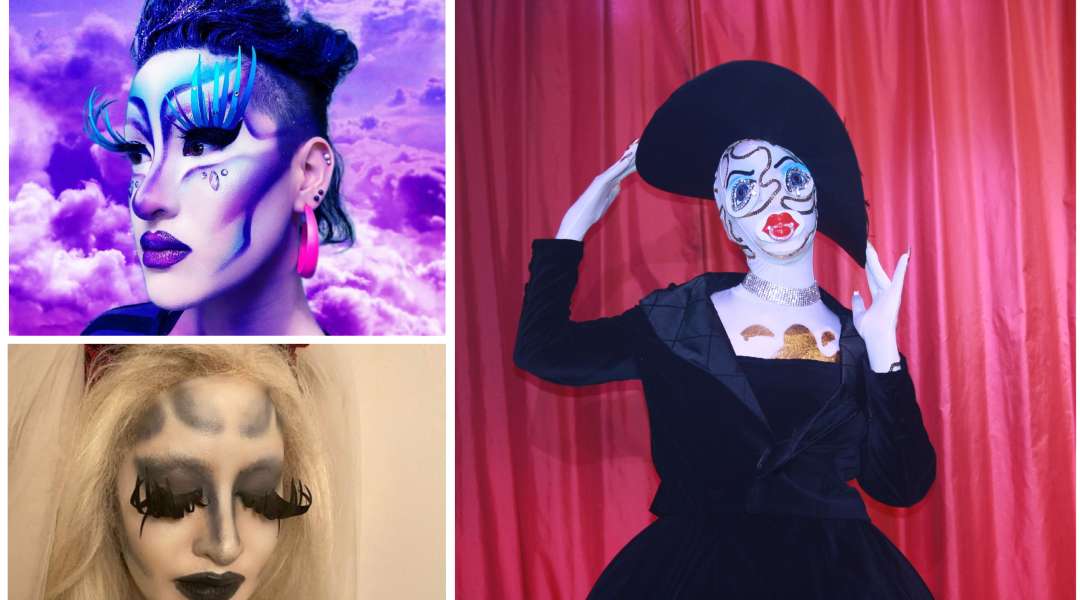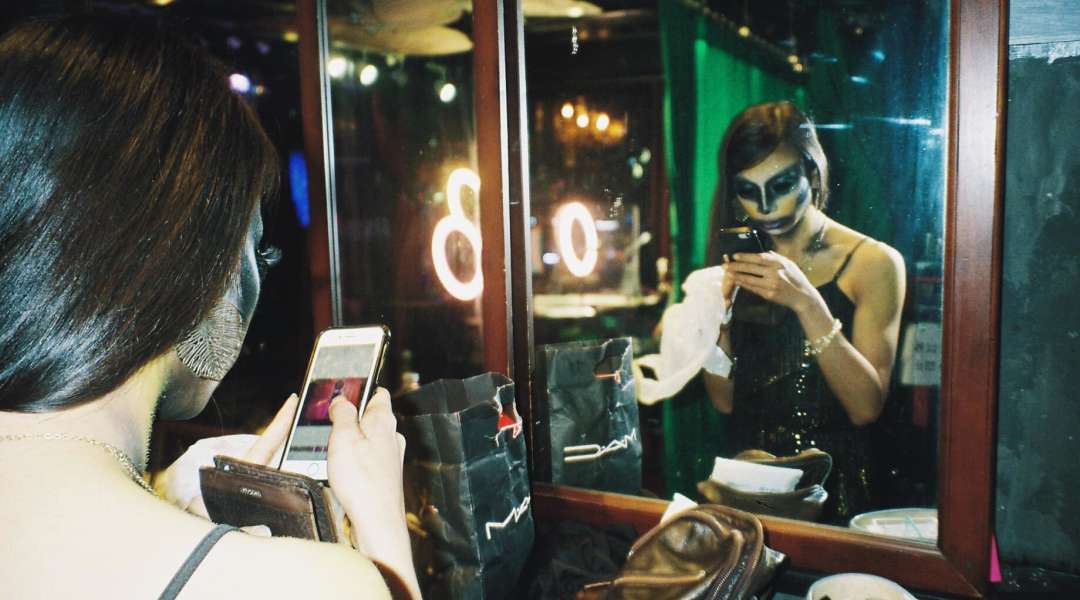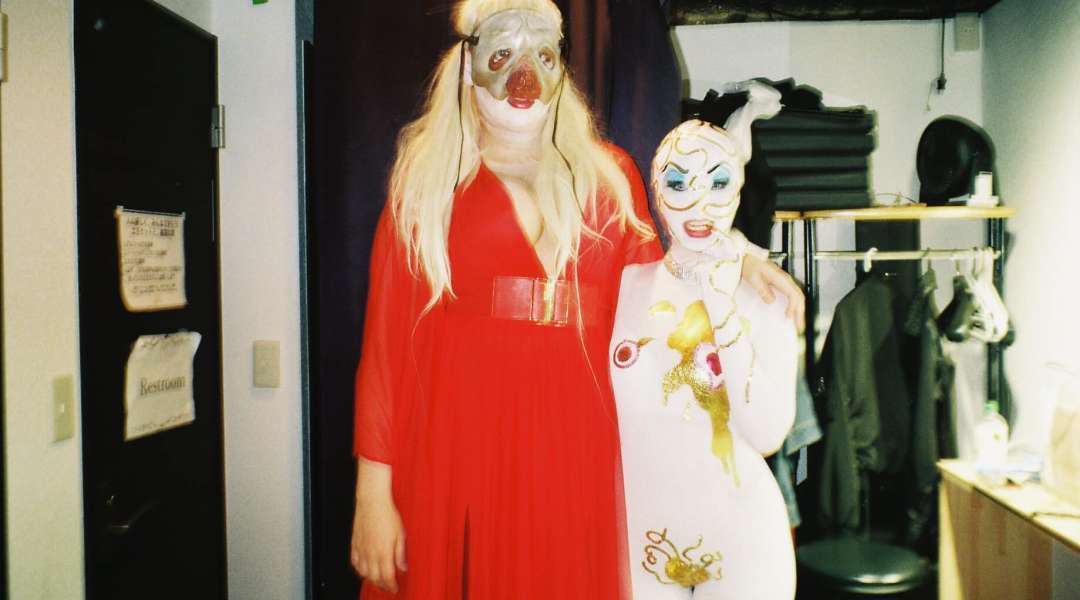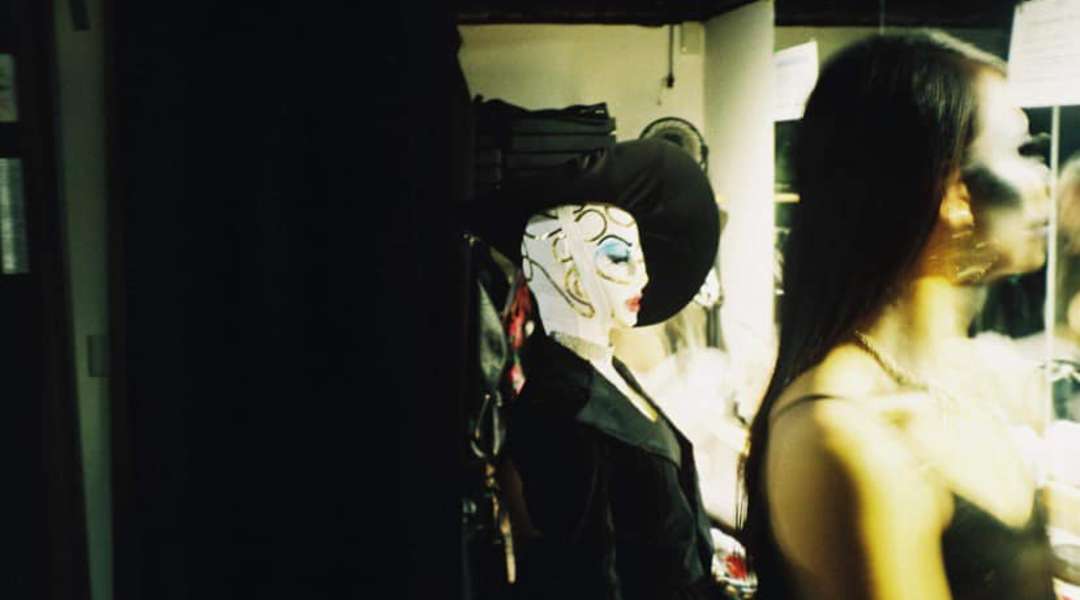
Like many before them, Kat moved to Japan to join the JET Programme for which they were placed in southern Kyushu's Oita prefecture. Fastforward a few years and now Kat is a student, writer and a drag performer in the bustling Tokyo! We asked Kat about their recommended places to experience Japan's thriving LGBTQ culture, and what kind of advice they have for all LGBTQ tourists and allies planning their trip to Japan.
Hi, thank you for talking to us today. Could you tell us a little about yourself?
Hello! My name is Kat Joplin, and I perform as Le Horla. I’m originally from San Diego, California, and I moved to Japan for JET in 2015, straight from college. Over the last six years, I’ve lived in Oita, Yokohama, and finally Tokyo.
I’m genderqueer/fluid and use they/them or he/him pronouns.

What drew you to working and living in Japan? How did you find it?
My adopted family is mixed-Japanese American, so I always had some ties to Japanese culture since I was young: Obon festivals, taiko, matsuri, and karate. My Japanese American grandmother was a great inspiration to me - she was third generation, and had spoken near-fluent Japanese as a little girl, but was forbidden to speak it after WWII and the internment camps. She often spoke to me wistfully about her forgotten language and the distant country she would never set foot on, but that her own grandparents remembered. It was one way she reflected on the overall trauma from that period in her life.
My high school offered Japanese classes, so in addition to a general cultural familiarity, I really wanted to study Japanese for my grandmother. She was just pleased as punch about it! Whenever we had an exchange student, she would proudly say, “Watashi ha nihongo hanashimasu!” And not another word!
Japanese was one of my majors in college, and after studying the culture and language for so long and becoming quite the weeaboo, joining JET and trucking out to Japan after graduation seemed like the most natural thing.
JET was a sleepy time. Eikaiwa in the city was a dreary time. I’m the happiest I’ve been right now, tutoring, attending grad school, and dressing up like a degenerate spawn on the weekends.

How was Le Horla born? Where can we watch them perform?
Immediately after JET, I spent the academic term from 2018 to 2019 in a ten-month Japanese language intensive in Yokohama. This is where I got interested in drag. At my language school, IUC, I had a really tight-knit friend group of fellow LGBTQ people; it was also the first time I was very out and open about my trans identity, and the IUC community was so celebratory of it that my interest in LGBTQ culture deepened overall.
I started watching Rupaul’s Drag Race as a way to deal with stress from my studies. I got drawn in, binged all 12 seasons, began frequenting drag shows in Tokyo, and most importantly, got very close to a classmate who was also gender nonbinary and wanted to experiment on drag looks together.
You can’t dress up in drag and roll out to a drag show without some part of you wishing you were up on stage.
In June we graduated from our language school, and a week later I and my classmate-turned-sister, Angel Heart, debuted as drag performers for the first time. I knew I had to stay in Tokyo after that--I had started laying down too many roots in the Nichoume scene and among the other drag performers to relocate back to America as I was planning. In November I moved back, essentially because I wanted to keep doing drag in Tokyo.

Angel and Le Horla are alternative drag performers. We do goth, horror, and ‘weird’ drag, dressing up to be monstrous. On Halloween 2020, we formed a drag haus called the Haus von Schwarz with the aim to nurture atypical drag and performance art in Tokyo. We want the drag community of Tokyo to continue to grow and to develop its own distinct, regional identity and character. And keeping a plurality of genres and a space for the weird and avant garde is essential for that vision.
Speaking of drag performances, do you have any favourite shows or venues?
There’s of course my haus’s own show, Casket of Horrors, which we hold every few months as either a live stream or hybrid event at Bar ROSSO in Shinjuku Gyoenmae. Our shows are a combination of live performances and an international video contest. Past productions are up on the ROSSO channel on Youtube, and the events can be found on facebook.

There are four other regular drag or drag-inclusive events that I recommend in Tokyo:
Beauty Blenda, by the Haus of Gaishoku, is a more mainstream and glamorous show held regularly in Shibuya. In addition to drag queens, they also have a lot of voguers, pole dancers, and a contortionist! There’s a pretty big overlap between the performance rosters of Beauty Blenda and Casket of Horrors.
Dragmania, held in Shinjuku’s EAGLE Tokyo Blue, is a drag show accompanying screenings of Drag Race and All Stars. I only had a chance to go to a few of these before Covid hit, but they’re expertly run and feature a great line-up of queens and dancers! Dragmania has also hosted visiting Ru-queens like Silky and Aquaria (in boy mode) in the past.
Finally, the legendary Department H is one of the best opportunities to see Tokyo’s most celebrated Japanese queens, who often appear to open the event in full pageantry. Department H is a fetish party, rather than an exclusively drag event, but it is typically MC-ed by the famous Queen Margarette and features queens like Onan Spelmermaid and Bouillabaisse in comedic routines.
There are other drag events, such as Swish!! at Aisotope, and a number of bars such as Bar Campy hosted by drag queens. Generally speaking, however, the drag scene is still much smaller than in other large cities.

What places or experiences would you recommend to LGBTQ visitors in Japan?
Shinjuku Nichoume’s very own 7Eleven! Haha seriously. On weekend nights, pre-pandemic, there is always a large gathering of locals in the streets surrounding the 7Eleven, near the Shinjuku Sanchoume exit. This is where people relax, talk, and take a breather between the clubs and bars.
Surrounding “Club 7” are the most popular Nichoume clubs and bars:
Dragon Men (which charges twice as much for patrons assigned female at birth, because sexism)
Arty Farty (most frequented by college-age youngins)
Aisotope (do not duckwalk and dip on the floor here, I had to disinfect my whole body)
EAGLE Tokyo and its club-vibe brother, EAGLE Tokyo Blue (my personal favorites)
New Sazae (a long-time staple of the area; a kind of quirky, retro disco club my drag mother adores)
And, of course, Bar ROSSO in Shinjuku Gyoenmae.

For patio drinking, especially during Covid times, I recommend AiiroCafe and Patchwork.
I have mixed feelings about recommending Goldfinger, since I have never gone and because they have a checkered past with trans-inclusivity, but I would be remiss in not mentioning one of Japan’s rare long-time operated lesbian bars.
Is there anything LGBTQ tourists should know before their first trip to Japan?
Japan is a very safe country for LGBTQ people, and you are much less likely to be physically assaulted for living openly than in a country like the US or UK. Japanese society and politics are also quite conservative, however: Japan has been slow to embrace same-sex marriage and legal protections for same-sex couples. Legal transitions for transgender people remain prohibitively difficult. This is a country where you can take for granted that you will be tolerated, but whether you will be accepted -- especially if you are a Japanese LGBTQ member -- is a more complex issue.

My advice to all tourists to Japan, especially Westerners, is to avoid treating Japan like a playground, to be mindful of the privilege that Westerners carry which Japanese minorities, non-Western and non-white expatriate and immigrants do not have. Enjoy mixing with the community, meeting people both Japanese and foreign, and prioritize the people.
Wear shoes that are easy to slip on and off. Bring your own fluoride toothpaste. Bring gifts for your hosts, friends, and new business acquaintances.
What book would you recommend to people who are planning their first visit to Japan?
I recommend Sayaka Murata’s 2016 novel, Convenience Store Woman (Konbini Ningen). The book caused quite a stir when it was published! While the book deals with more existential topics like conformity and finding meaning in one’s life, it also is a great introduction to the ubiquitous Japanese convenience store--truly the hub of all life!
Returning to your Oita days, what are some must-see travel spots in Oita?

Oita needs a rental car to be properly enjoyed!
My favorite spots around my town of Nakatsu were Rakan Temple, hidden in the mountains of Yabakei, the Yabakei cycling road, and of course Nakatsu castle.
Other cool spots in Oita include the stone Buddha faces of Bungo Takada, the hot springs of Beppu, and the lush, fertile area surrounding Mt. Aso down in southern Oita. (where you can camp, hike, ride horses, and visit the flower park. It is truly one of the best places in Kyushu!)
Our word of the month is 'enryo no katamari' (遠慮の塊) which is a phrase used to refer to that one last lonely bit of food that no one wants to touch out of politeness. What kind of food from Oita you wouldn’t be able to stop eating till the last bit?
Nakatsu Karaage!!! Every year, Nakatsu is host to the largest karaage festival in the world. Its famous shop, Genkiya, is in the Guinness Book of World Records for the biggest fried chicken serving.
You can check how Kat's been doing on their Instagram and Twitter or read articles penned by Kat for Tokyo Weekender here.

















































